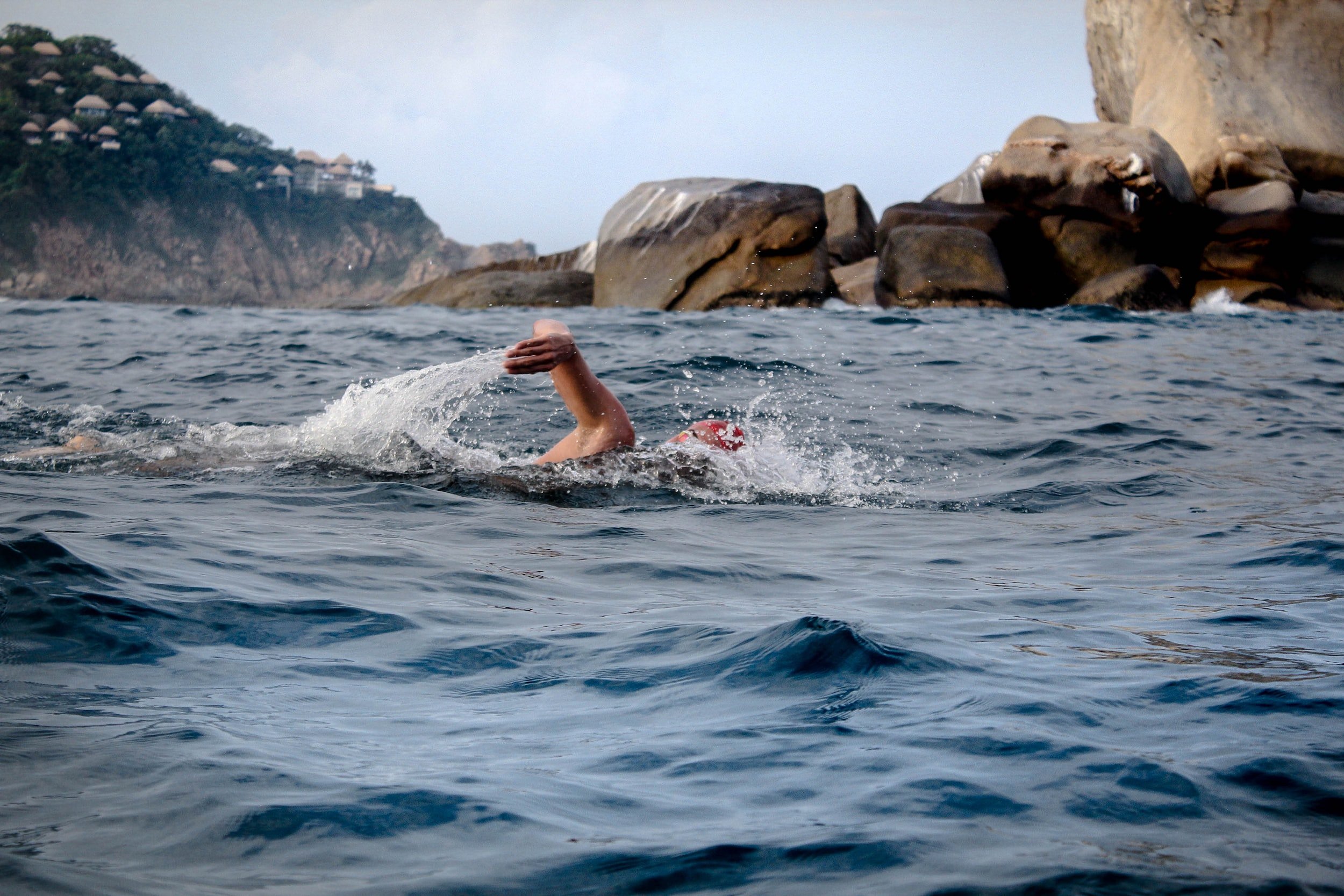
Sea swimming for triathletes
Does your next triathlon involve a sea swim? Read on for tips on racing in the sea vs fresh water.
For triathletes, swimming in open water can be quite different from swimming in a pool. One of the biggest differences is the type of water you're swimming in – fresh water or salt water. Each has its own unique challenges and requires different training and preparation. In this blog post, we'll explore the differences between fresh water and sea swimming and provide some example swim sessions and drills to prepare for a sea swim in a triathlon race.
Fresh Water Swimming vs Sea Swimming
Fresh water is typically found in lakes, rivers, and reservoirs. One of the biggest differences between fresh water and sea swimming is buoyancy due to the salt content in the water. Salt water is more buoyant than fresh water, which means you'll float higher and need to use less effort to stay afloat. This can be an advantage, but it can also make it more difficult to get a good body position in the water.
In fresh water, the visibility is usually better than in salt water, which can make it easier to navigate and swim in a straight line. In the sea, the visibility can be poor, especially if there are waves and currents. This can make it more difficult to navigate and swim in a straight line.
Drills to Improve your racing in a sea swim:
Sighting Drills: These drill can help you improve your ability to navigate and swim in a straight line in open water. Start by swimming with your head down, then lift your head every 6-8 strokes to sight the buoy or landmark you're swimming towards.
Head out of the water drill: Otherwise known as waterpolo drill, this is useful for sighting when you need to lift higher to see over other swimmers or waves, or keep your head out of the water for a few strokes while you get your bearings.
Drafting Drill: This drill can help you improve your ability to swim in a group and conserve energy.
Breathe bilaterally: Practice breathing on both sides to help you navigate in choppy water and avoid swallowing salt water.
Practice your transitions: Practice exiting the water and running to your transition area so you can be efficient and smooth during the race.
Wetsuits and sea swimming
Remember to use lots of lubricant to protect your skin against salt rubbing around your neck / shoulders.
